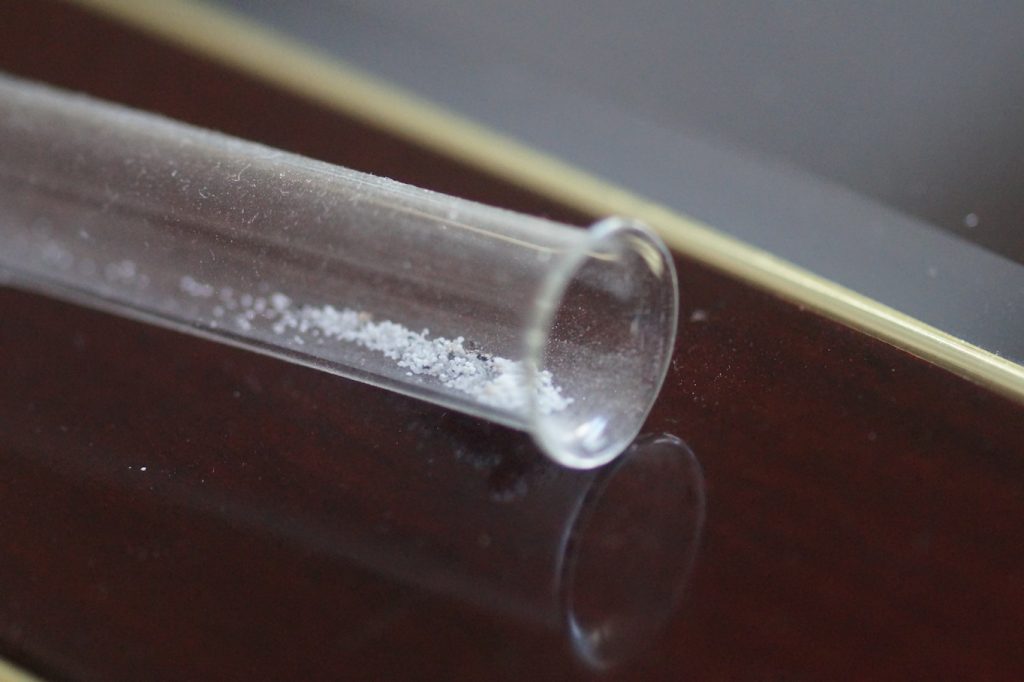Ant larvae being attended to. Life in the brood chamber of my Lasius umbratus colony.
Outside temperature: 6*C / Ant Room Temperature: 8.6*C
Lasius umbratus
Things are still very slow in this colony, despite being the most active colony of the three. I do see more of these ants out foraging and feeding than the other two colonies. However, there are periods when there are no ants whatsoever outside of the nest. Inside the nest activity is slow, and the movement of the ants quite sluggish.
Myrmica rubra
Very little activity outside of the nest, next to none to be honest. I saw one worker ant in the foraging tank this morning, investigating some food I had put in. But that was it. Though these ants are the least active outside of the nest during the winter, they are the most active inside.
Lasius niger
I have seen some increased activity in this colony over the past few days, being centred on the larvae. The larvae have been in a condition of paused, or extremely slow, development, as is normal at this time of year. However, the worker ants appear to be paying more attention to them recently. I have seen the workers tending to the larvae more regularly now, and there are sand particles among the larvae. This suggests one thing to me; the larvae are about ready to enter the final stage of their development to adulthood – the spinning of a cocoon. Lasius niger are Formicine ants. One characteristic trait of the species of ant in this group is that the larvae create a cocoon around themselves. This is in much in the same way a caterpillar does as it metamorphizes into a butterfly.
Within the secrecy of the cocoon, the ant larvae develop into the adult ant. This process takes between 4-8 weeks on average, dependent on various factors, such as ambient temperatures and species. The larvae of the Myrmicine groups of ant species, such as Myrmica rubra, do not create a cocoon in which they develop. Rather they develop as “naked” pupae, as it were. This allow the observer to witness the actual metamorphism.

Spinning a cocoon
In order for an ant larva to create its cocoon, it needs a helping hand. This is provided by the adult worker ants. The ants often place granules of sand or soil directly onto the skin of the larvae. It appears that this irritates the larvae in some manner. This encourages the larva to create a cocoon. What if there is no sand or soil available, such as when living in an artificial nest? In this case the the adult ants can use their own bodies to cause the irritation to the larvae. I have seen in previous Lasius niger colonies that I have owned, the larvae becoming “naked” pupae. This does not appear to cause the developing Lasius niger adult any problems. I have seen the resultant adult ants functioning and looking normal.
Hopefully this means that the ants sense the approaching of Spring, a little under 6 weeks away (21st March). I may start seeing some more activity from all my ant colonies very soon.
Video – Life in the brood chamber of a Lasius umbratus colony.
I have uploaded a video in which I film the activity in one of the brood chambers in my Lasius umbratus ant colony. It shows the ant larvae in one of the brood chambers. You can find it HERE.
Video description: This is a peek inside one of the brood chambers in my Lasius umbratus colony, filmed today (12 Feb. 20 – winter). It shows the ant larvae being attended to by the workers.
The video is in two parts. Part one is me filming using a Sony A58 camera with a 2.8/100 macro lens fitted. The camera is handheld, using manual focus.
Part two is with the camera on a tripod, using auto-focus. Same camera and lens.
Look closely and at times you will see the larvae actually moving in the brood chamber. Though ant larvae can make limited movements, they cannot actually propel themselves. They just arch their bodies as they tell the adult ants “feed me!”

Hi i recently got and ant world and brought a queen and 10 to 20 workers and brood of lasius niger. I was wondering does the queen need a separate chamber or do they dig there own chamber in the sand/ soil. I put them in the magnifying dish and not sure if queen would be able to get to the sand ? Was wandering if u have ad experience using ant world ?
Hi Paul.
Thank you for your question, and for visiting my website.
If I have read your question correctly, you have an ant farm with sand/soil, and a young colony of Lasius niger? If you have workers and a queen, and you place them in them magnifying dish, or even directly into the ant farm itself, then you do not need to create a chamber for them. The queen does not need her own chamber. The workers, once they discover the soil in the ant farm, will start to dig out a new nest. At first it will probably be just a couple of chambers, or even one. Once the workers are happy that there is enough room for their queen, they will encourage her to move in. Once she is in, and the brood too, if present, then the workers will continue to expand the nest.
I have used the green Ant World before and I think they are great for beginners or those with small colonies. The only thing I don’t like about them is that sometimes the plastic can be scratched, with might interfere with a clear view into the nest. Other than that, they are ideal.
I hope I have answered your question. Feel free to ask any further questions you may have. Thank you again for your question.